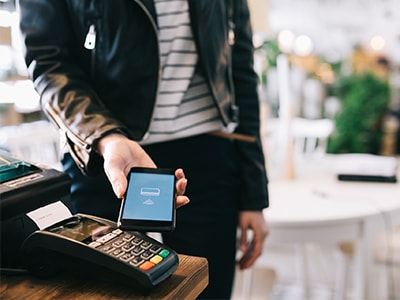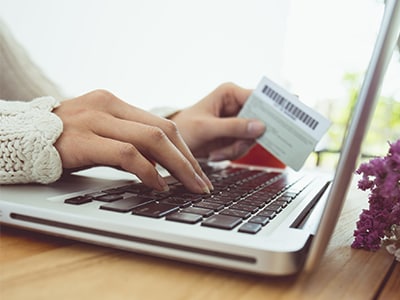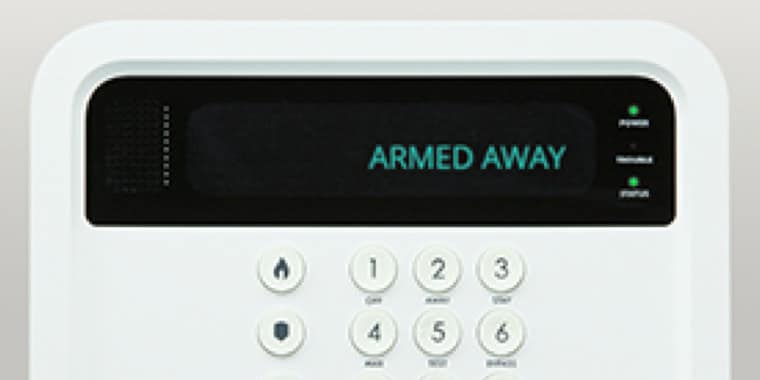Credit cards are convenient to use and offer you cashback rewards and travel miles as well as other perks! They can also help you establish good credit. But unfortunately, there are just as many credit card risks as there are benefits.
Cybercriminals have figured out how to steal credit card numbers and other personal information that could put your finances in jeopardy, even without you swiping your card. In 2017, credit card fraud topped their list and cost them a collective $74 million.1
You can reduce your chances of being a victim of fraud by following our top five credit card safety tips.
1. Watch out for ATM scams
2. Shop securely online
3. Use a mobile payment app
4. Opt out of automatic credit card pre-approvals
5. Sign up for fraud alerts
Shop Securely Online
According to a 2016 study, 96% of Americans shop online. On average, these online shoppers spend about five hours per week making online purchases and devote approximately 36% of their shopping budgets to e-commerce.3
The Center for Internet Security suggests three ways that consumers can be vigilant about their credit card safety online: by spending their money on trusted websites that have the all-important "https," which denotes extra security, as the URL prefix; by not shopping while using public Wi-Fi; and by not saving sensitive information to be auto-filled by the site or your browser.4

Use a Mobile Payment App
In 2017, the number of digital payments that were made through an app, such as Apple Pay, Google Pay or Venmo, grew to about $721 billion.5 Despite this, only 12% of consumers trust these payment methods.6 According to some experts, though, so-called digital wallets actually improve credit card safety online. That's because mobile operating systems have software that essentially isolates individual apps from malware.
Furthermore, users can opt into multi-or two-factor authentication and have their phones lock after a short period of time, both of which add extra layers of security.7 Most of these apps send an immediate notification to your phone when your credit card is used. That's a great side benefit, because if your card is used without your knowledge, you'll know instantly.
To stay as secure as possible, be sure to download all software updates to your phone and app when they become available, and always sign out of your payment app when you're finished.
Watch out for ATM Skimmers
A device called a skimmer can be inserted into the machine's card reader. When customers use their card and withdraw money, the skimmer copies the data from the card's magnetic strip. These thieves will often also install a pinhole camera above or beside the keypad to record you entering your PIN.2 Armed with both your card information and your PIN, thieves can withdraw large amounts of money from your account. There are several ways to protect yourself. Avoid standalone ATMs and use only those installed at a bank, as these will often be better guarded against tampering. Cover the PIN pad while punching in the number. If an ATM machine looks as though it's been tampered with, walk away and find another one.
Opt Out of Automatic Credit Card Pre-Approvals
It’s a digital world, but there's a tried-and-true method for stealing personal and financial information that thieves still use: raiding mailboxes. Criminals tend to look for envelopes from credit card companies, banks or other financial institutions that may include statements with account numbers or offers for pre-approved credit cards. They can use your personal information to steal your money or fill out an application to have a new credit card delivered to their own address.8 To reduce the odds of your identity being stolen through the US Post, the Federal Trade Commission recommends that your cut down on unsolicited mailings by visiting Opt Out.9 You can also register at the Direct Marketing Association's website, and for a processing fee of $2, stop ljunk mail from arriving in your mailbox for the next 10 years.

Sign Up for Fraud Alerts and Identity Protection
Most major banks and credit card companies let you set up spending notifications and other alerts related to your account that bolster your credit card safety online. You can create these alerts by logging into your account online or via a smartphone app and managing them under your settings. Not only do these alerts keep you apprised of funds deducted from your account, but they can also be used to ping you when bills are due or let you know if your balance has fallen below a certain threshold.
Keeping close tabs on your spending allows you to act fast if something suspicious occurs. If you suspect a charge has been made without your authority or your credit card has been lost or stolen, call your credit card company immediately and report the misuse.
A great way to make sure you’re proactive about monitoring your credit card information is Identity Protection from ADT. Identity Theft Protection provides a wide view of your credit history, from daily alerts if something changes, to a full year of activity. You’ll receive a full annual credit report, including credit inquiries, new account openings and existing accounts past due.
Few people can get by these days without a credit card. They're more convenient than cash, let you pay off balances over time and help you build your credit history. But they can be stolen and misused. Keep your identity and money safe by taking a few precautions with the help of these credit card safety tips. By adding layers of security, you'll reduce the chances of becoming a victim of fraud.
Related Articles
1. Barkly and the Ponemon Institute. "The 2017 State of Endpoint Security Risk Report". Accessed June 1, 2018.
2. Barkly. "The Hype-Free Guide to Fileless Attacks". Accessed June 1, 2018.
3. Simon Wiseman. "Why 'fileless malware' is the biggest new threat to your business." Accessed June 1, 2018.





